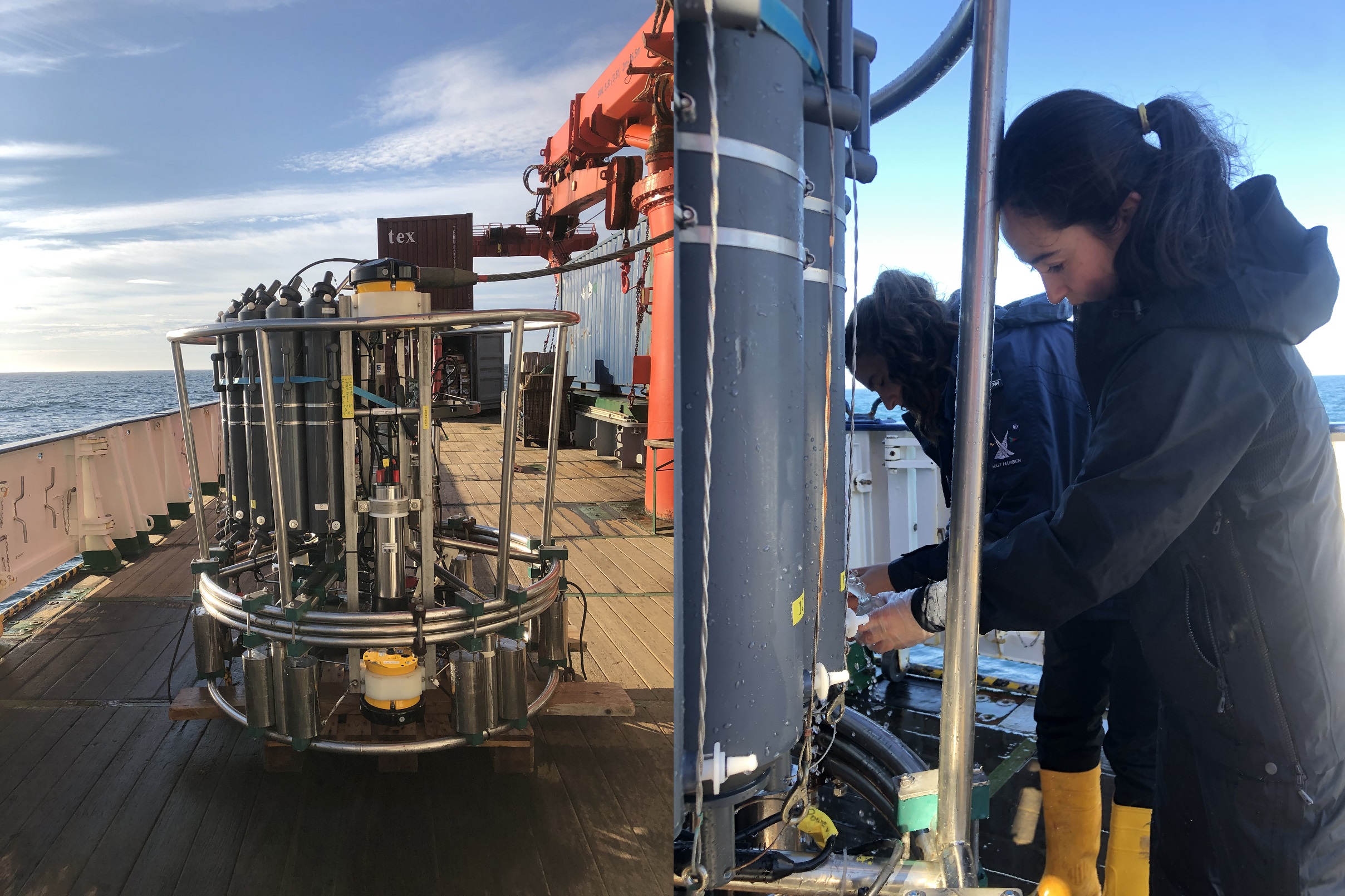By Anne-Sophie Fortin

As we move along the 53oN Array, we are performing “CTD casts” which consist of lowering a CTD-Rosette to the ocean floor and pulling it back up on deck. A CTD is an instrument that precisely measures the Conductivity and Temperature at every Depth. We can then compute the salinity from the conductivity and the temperature. A Rosette samples seawater at selected depths in so-called “Niskin bottles”. From an analysis of the seawater, we can determine the concentration of nutrients, salt, dissolved oxygen, and dissolved inorganic carbon.
The CTD casts also serve to calibrate the moored instruments of the 53oN Array. To do so, we attach the instrument to the CTD-Rosette in between their recovery and deployment. The pair of datasets that are generated by the instruments belonging to the 53oN Array and the CTD is then used for the instrument calibrations.
Koordinaten: 53.195, -50.627167